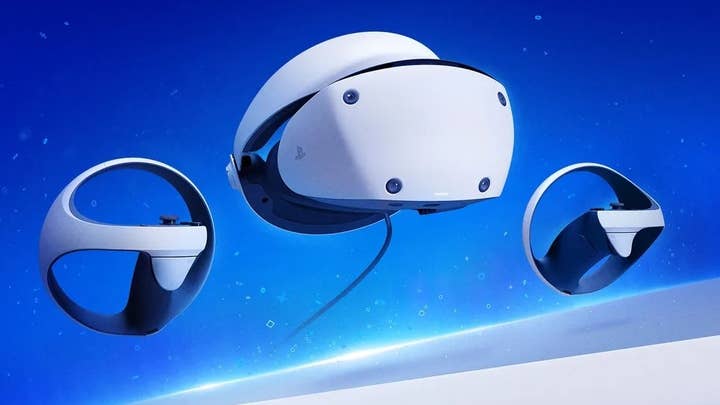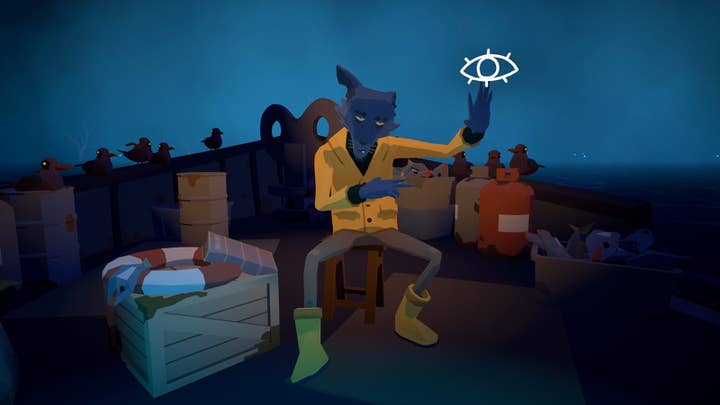Sony's third-party plan to make PlayStation the best place to play
Shawne Benson lays out SIE's third-party portfolio strategy and how it changes between console, VR, and PC
As Sony Interactive Entertainment's head of third-party portfolio and acquisitions, Shawne Benson is in a good position to trace the platform holder's evolving strategies when it comes to – in her words – "making PlayStation the best place to play."
Benson has been with Sony in a portfolio role since early 2017, and took over her current title in 2021. Speaking with GamesIndustry.biz ahead of this month's DICE Summit, Benson says she's seen a significant change in what her role entails as part of the larger PlayStation strategy, in part due to where the company has been in the console generation lifecycle.
"In the time that I joined, and I was watching my predecessor manage the team, he was really focused on driving value for the masses in our PS4 audience, and also really focused on PSVR. And a lot of the partnerships were really about driving engagement on the platform, so the types of games we brought would tell that 'breadth and depth' story and also showcase some of the innovations on PS4.
"Since then there have been other people who have taken that role and I've seen the evolution within that time frame, and the shift really focused and moved over to content acquisitions from a future technologies perspective. So we were really focused in trying to drive a lot of excitement around the launch of PS5 and making PS5 be the best place to play. A lot of the content we would focus on evolved based off of that."
"The way I lead my team now is a lot more future-thinking and thinking about 'What does the next three to five years look like, from a gaming perspective?'"
Different business models and kinds of games coming to market have also changed the way Sony thinks about partnerships.
"In the past we would look at things that were closer to release because they were known quantities and so forth," Benson says. "The way I lead my team now is a lot more future-thinking and thinking about 'What does the next three to five years look like, from a gaming perspective?'"
One of the biggest splashes a platform holder can make on the third-party front is exclusivity. And while we rarely see fully exclusive third-party games in the AAA space these days, and Benson says that's partly because it wouldn't be a good fit in a lot of cases, for a variety of reasons.
"There's room for exclusives where it makes sense, obviously, but really the focus – especially with a digital distribution model that is more prevalent than in generations past – is that there are different types of gameplay out there," Benson says. "For example, a free-to-play game's business model is most successful when it's on as many platforms as possible and brings the biggest audience possible."
So as Sony assess opportunities, it's often less about securing exclusivity as it is about making the PlayStation version stand out as the one to get.
"So that's thinking about it less around exclusivity than what kind of technologies could they adopt that really make PS5 sing," Benson says. "What kind of innovation can they apply with the haptics in the DualSense or the adaptive triggers? What could they do with 3D audio in the sound design of a game, etc? So there's a lot of things we could do and then create marketing stories around, and that's where some of these partnerships for multiplatform games really focus."
Benson notes that Sony doesn't specifically pay for adoption of DualSense features, for example, but if the team believes "it's a good PlayStation story," then they would work on a partnership that could include marketing or development support.

When Benson is looking at Sony's third-party strategy for the next three to five years, she's also looking at the PSVR 2 over that span. And while competitive concerns about other consoles may help shape the PS5 strategy, Benson says it's a very different situation in VR.
"We definitely are still in this 'raising tide helps all ships' mindsets for the VR ecosystem, so it's not the same kind of competitive landscape..."
"We definitely are still in this 'raising tide helps all ships' mindsets for the VR ecosystem, so it's not the same kind of competitive landscape as it is, say, in the console space, kind of 'flat' gaming experience," Benson says.
That's not to say the PSVR 2 strategy is the same as that of its predecessor. Benson joined PlayStation in the original PSVR's launch window, and says she can see how clearly it has evolved.
"[In the original PSVR launch window], it was still trying to sell the promise of why to develop for VR," Benson says. "Now we have this community of much more seasoned creators – teams like Polyarc, NDreams and so forth that are dedicated studios to the VR space. I think both sides, Meta and PlayStation, have really put a lot of investment into these studios to make sure we still can tell that story from a technology perspective, because there's still a lot of belief in that experience."
The goal now is to keep that developer community thriving, and that means the company takes a different angle toward its VR partnerships.
"It's around how we can best support you to be able to bring that content over to PSVR2, and that can be development funding support to marketing support because a lot of these studios don't necessarily have the same kind of marketing infrastructure as a bigger publisher would," Benson says. "And if you look at the two platforms, they're very different experiences and they all kind of have their own space for it."
That's different again from the way Sony views the PC as a platform for third-party relationships and exclusivity purposes. The PC ecosystem is obviously more developed than that of VR, but Sony isn't taking the same competitive approach to it as with consoles when it comes to its third-party deals.
"...PC is really not in the same kind of competitive space for us, at least currently"
"When we look at partnerships, we're looking at how we can support both the partner and the platform," Benson says. "Our mindset is we want to make sure the partner can keep the lights on and generate revenue in other channels.
"And from my perspective, it's really important for gamers to have choice and variety of opportunities in places to play, and PC is really not in the same kind of competitive space for us, at least currently. So it's not really a thing we focus on when we look at partnerships. If you look at a lot of our indie partners, that's a great opportunity for generating revenue on their side, and our side as well."
While AAA partnerships might get the most attention from the outside world, Benson stresses the importance of smaller developers to Sony.
"They're the lifeblood to our platform," she says. "I certainly have a lot of personal attachment to it. If I'm not even wearing a Sony hat, that's my community. Those are the people I was born and raised in the game industry with. I have a huge affinity for that and it's what got me into the game industry in the first place.
"From a content strategy standpoint, it is absolutely a priority for us. The AAA obviously has a lot of commercial return and value, and the indie games also offer innovation and things that influence AAA down the line because they take more risks and there are more types of mechanics they incorporate."
She mentions Before Your Eyes, which relies on eye-tracking and uses blinking as a game mechanic. The game has been released on PC and mobile, and is expected to launch for PSVR 2 later this month.

"These types of things are so imaginative, and so different, and so important to the ecosystem of gaming and the types of content we create on our platform, so it's very important," Benson says. "Also our audience is becoming more and more diverse than ever, and having a more diverse creative pool bringing content to our platform is very much a focus for me and our team at large."
She adds, "We see value in all those types of games and it is a wide spectrum. We don't try to relegate them to an indie corner; they are sitting alongside the biggest of the games. Look at Stray, look at Kena, look at Sifu. Those games are revered as some of the biggest types of IPs for PS5 and those were created by indie teams so it's very much a priority for us and continues to be."
"Look at Stray, look at Kena, look at Sifu. Those games are revered as some of the biggest types of IPs for PS5 and those were created by indie teams..."
This isn't the first time Sony has wooed and showcased indie developers. They were also a key part of the PS4's early success, from Sony featuring Jonathan Blow at its PlayStation 4 reveal and devoting a segment of its 2013 E3 show to indies ahead of the system's launch.
But Sony's relationship with small developers frayed over the course of the PS4's lifespan, with indies in recent years pointedly criticizing the company for poor communication, lack of promotion, and not letting them participate in sales events. In a session at GI Live: London last year, Sony's chief indie liaison Shuhei Yoshida acknowledged the company had shifted its focus too much to the AAA side of things late in the PS4 generation.
Benson is confident Sony won't repeat that this generation, in part because Sony restructured its PlayStation business a few years back to replace regional US, European, and Japanese branches with a single globalized operation.
"There is a bigger bench than ever in terms of the dedicated support and team," Benson says, adding, "One of the differences in the PS4 generation was we were a regionally-operated team, so there wasn't this cross-functional level of care and support that we were even equipped to do because there weren't resources available to support it."
She says now there's a significantly sized team of people devoted to indies, one led by Yoshida, Greg Rice, and others who are demonstrably passionate about small developers and the games they make.
"They are constantly advocating for partnership opportunities as well as – even without deals – ways to amplify and advocate for support within our channels, whether it be [PlayStation] Store, or our content communications team working on the blog, or events and so forth," she says. "I would say there's a lot more levers we have to pull to be able to support these creators, and there are a lot of tools being put in place to support these creators. It's much, much more evolved than where we were when I started in 2017."

